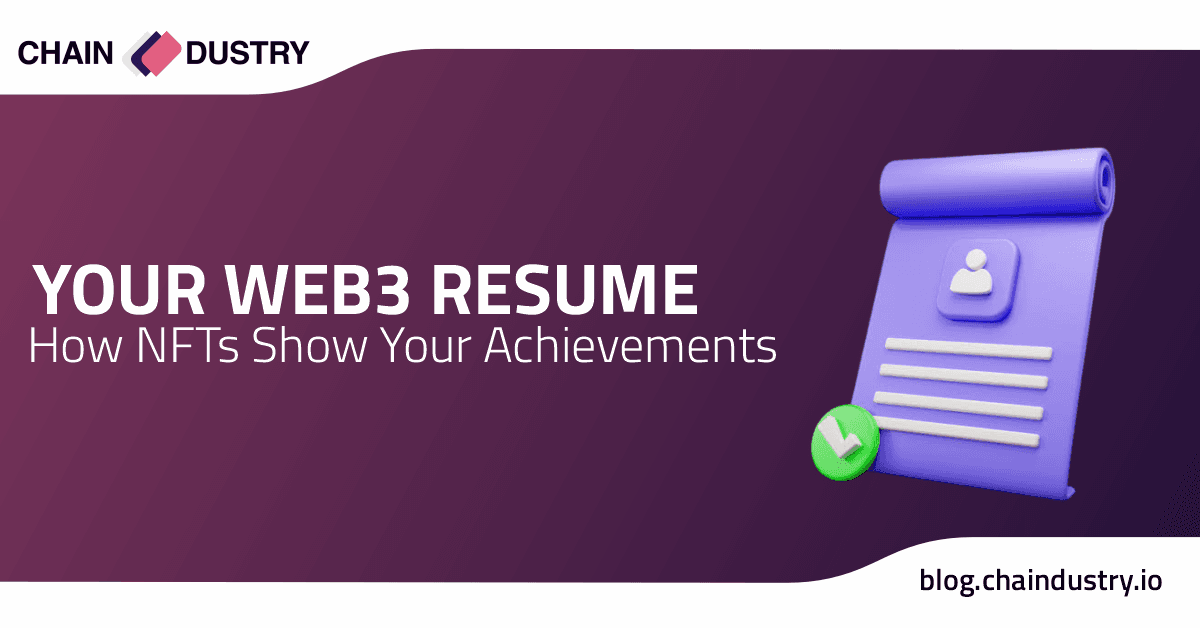Introduction
In Web2, your identity lives across dozens of centralized platforms, Facebook, LinkedIn, Google. In Web3, the shift is happening toward NFT-based identity, where your achievements, memberships, and credentials can live on-chain, portable and verifiable anywhere. Think of it as your digital passport for the decentralized world.
What Is an NFT Identity?
Unlike profile pictures or speculative collectibles, identity NFTs represent who you are in Web3. These could be:
-
Membership NFTs proving access to a community or DAO.
-
Credential NFTs showing certifications, skills, or on-chain contributions.
-
Soulbound Tokens (SBTs) that are non-transferable, tied to your personal wallet forever.
Projects like ENS (Ethereum Name Service) and Lens Protocol are already pioneering identity layers for Web3.
Why Identity NFTs Matter
1. Ownership of identity: No company can delete or censor your profile.
2. Interoperability: Use the same ID across DeFi apps, games, and communities.
3. Proof of reputation: Your wallet shows verifiable history like jobs done, DAOs contributed to, or events attended.
In short, your digital identity becomes self-sovereign.
How NFTs Become a Web3 Passport
With picture logging into a DeFi platform or metaverse with your NFT identity. Instead of a username and password, your wallet connects and instantly verifies:
1.That you’re a real member.
2.That you’ve earned certain credentials.
3.That you qualify for gated experiences, airdrops, or opportunities.
This turns NFTs into a universal passport across apps, networks, and even real-world integrations.
The Future: Your Web3 Resume
Beyond just proving identity, NFT-based credentials could act as a Web3 resume.
a. Developers could showcase projects built.
b. DAO contributors could verify votes and proposals.
c. Event-goers could prove attendance with POAPs (Proof of Attendance Protocol NFTs).
It flips the script, instead of trusting unverifiable LinkedIn claims, people can check on-chain proof.

Your Web3 Resume – How NFTs Show Your Achievements
In Web2, your résumé is a static PDF that recruiters glance over. In Web3, your achievements can be on-chain, verifiable, and portable and NFTs are the building blocks of that new résumé.
Here’s how it breaks down:
Education & Credentials
Universities, bootcamps, and online academies are issuing NFT certificates that prove you’ve completed a course or mastered a skill. Unlike traditional certificates that can be faked, NFT credentials are permanently verifiable on the blockchain.
DAO Contributions
Every vote you cast, proposal you submit, or role you take inside a DAO can be logged as an NFT badge. Over time, these create a track record of governance and collaboration, showing exactly how you’ve contributed to Web3 communities.
Events & Communities
Attending a conference, AMA, or even an online hackathon often comes with a POAP (Proof of Attendance Protocol) NFT. These work like stamps in a passport—evidence of your active participation in the culture and events of the crypto space.
Work History
Freelancers, developers, and creators can earn on-chain work NFTs tied to specific projects or tasks. Instead of a LinkedIn endorsement, you’d have cryptographic proof that you completed real work for a protocol or client.
Together, these NFTs form your Web3 résumé that's a verifiable passport of your skills, contributions, and reputation that you can carry across the digital economy. Instead of asking people to “trust” your achievements, you can prove them instantly.
Conclusion
NFTs are moving far beyond speculation and PFPs. As identity becomes one of the most valuable assets online, Web3 is reshaping how we prove who we are, what we’ve done, and what we’re allowed to access. Your digital passport won’t be a government-issued ID, it could be an NFT in your wallet.
